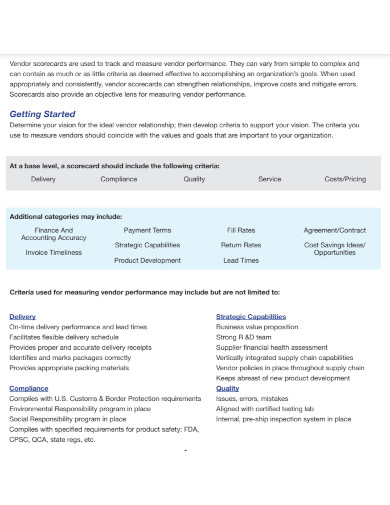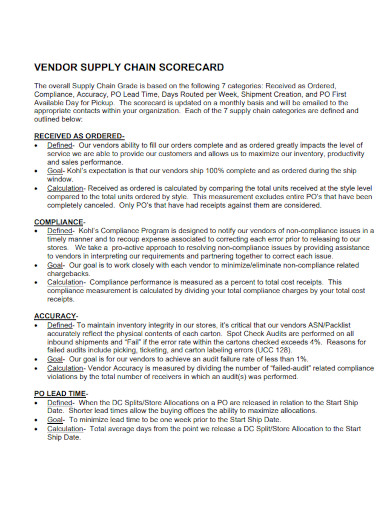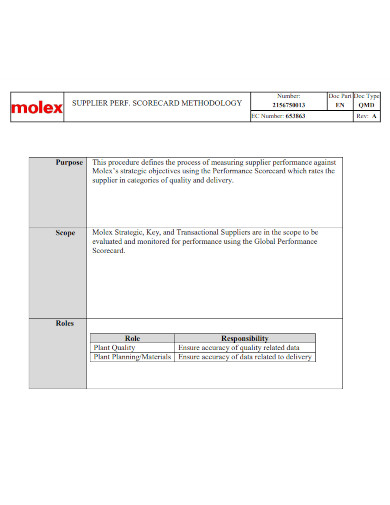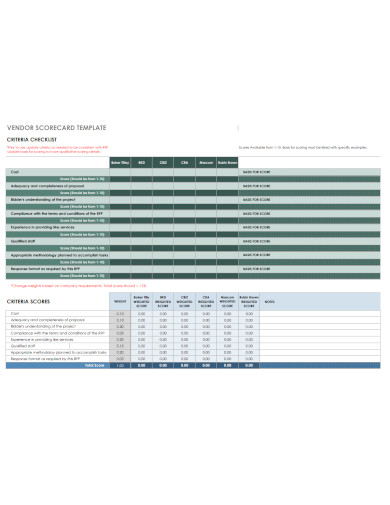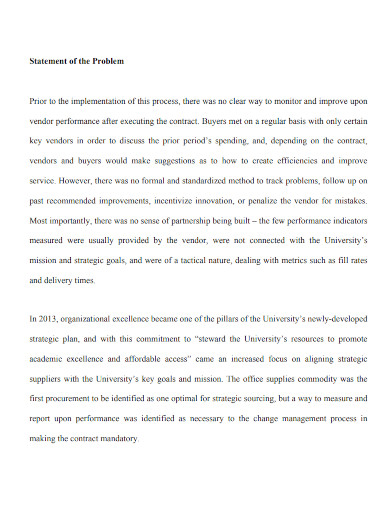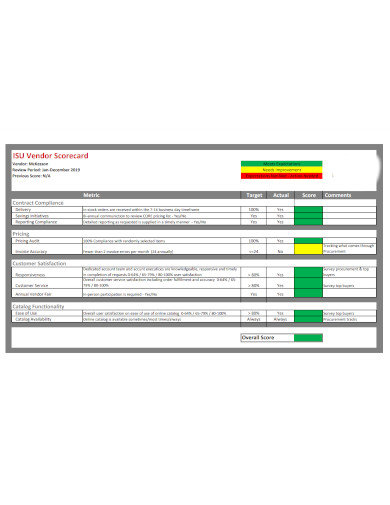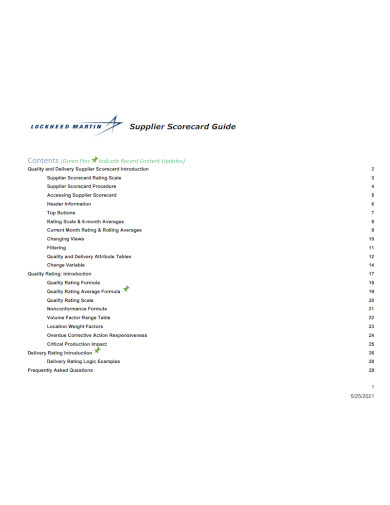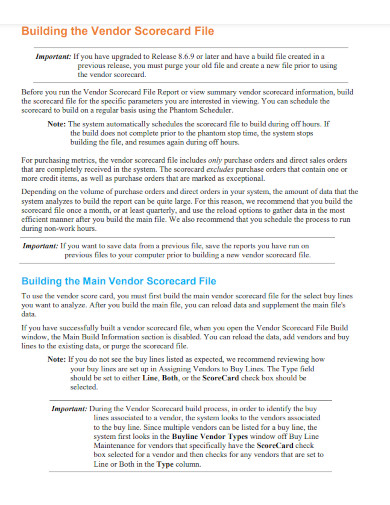Establishing and maintaining a relationship with a vendor is one of the most important in running a business. Vendors play a variety of roles in the growth of a company or organization as they supply raw materials needed for production or provide SaaS platforms for them. As your business grows, you might find it challenging to track and monitor the performance of your suppliers which can lead to duplicate purchases which can negatively impact the development of your company. With a vendor scorecard template, you can monitor and track supplier performance by simplifying vendor management.
10+ Vendor Scorecard Samples in PDF
1. Vendor Scorecard Template
2. Vendor Supply Chain Scorecard
3. Vendor Scorecard Methodology
4. Vendor Scorecard Checklist Template
5. Building a Vendor Scorecard Process
6. ISU Vendor Scorecard
7. Effective Supplier Vendor Scorecard
8. Vendor Supplier Scorecard Guide
9. Using the Vendor Scorecard
10. Vendor Performance Evaluation Scorecard
11. Vendor Consultant Scorecard
What is a Vendor Scorecard Template?
A vendor scorecard template also called a supplier scorecard or a supplier management scorecard is a business management and project management tool that allows you to conduct vendor performance analysis and monitoring which helps you in securing a beneficial relationship with a vendor or supplier. This template is widely used across various industries as it supports strategic supplier relationship management.
How to Create a Vendor Scorecard?
Creating and using a vendor scorecard helps you in determining gaps in your business performance, the areas where your vendor can enhance and develop their performance, identify your supplier’s ROI, and remove the knots in your supply chain. With this template, you can evaluate the performance and effectiveness of your vendor as your business grows by breaking down its performance into categories and factors that you can quantify.
Step 1: Collect the Necessary Guiding Documents
You can start by collecting your original Request for Proposal (RFP), your vendor’s RFP response, and the vendor contract. You can use the information in these documents as your guide in the vendor evaluation process. Consider the scoring used in this document and identify the areas that were given the most attention or value. You can take note of these areas as you discover them.
Step 2: Identify your Performance Categories and Priorities
After listing down the important areas in the RFP, identify which of them determines the success of your business or project. As you look at each item or area, consider thinking about the possible outcome when a vendor does not perform well. As you think about it, select the most valuable factor and sort them into categories.
Step 3: Describe your KPI
Define the metrics that can help you objectively measure or assess the vendor performance or a supplier in a certain focus area. Using KPIs can help you make a more informed decision about these metrics and maintain justifies the vendor-related decisions by using data.
Step 4: Set your Grading Scale
After identifying what areas to track, you can now decide how you’ll grade them. If it’s your first time conducting vendor evaluations, you can start by focusing on questions with yes or no answers.
FAQs
What are the criteria for evaluating vendor performance?
The criteria for evaluating or assessing vendor performance include delivery performance, strategic capabilities, compliance with regulations, quality management, and customer service.
What are the KPIs I can include in my vendor scorecard?
When you’re creating your vendor scorecard, you can include KPIs such as delivery performance which tracks the consistency of deliveries over a certain period of time, the quality which tracks the quality of the raw materials or supplies that your vendor provides, lead time which refers to the tracking of lead or the time between production and delivery, and the shipping cost which tracks the entire cost of shipping materials and supplies from the vendor to the business.
What are the tips for using a vendor scorecard?
When you use a vendor scorecard, make sure to ask for feedback from your vendors, focus on the quantitative data for an accurate measurement of vendor performance, and create different criteria for each of your vendors as they differ in functionality and deliver different material.
A vendor scorecard template is used by businesses to evaluate and rate each of their vendors or suppliers based on their performance within a period of time. This template allows a business or company to determine which of its vendors is able to provide the best services and which of them needs improvements.
Related Posts
FREE 9+ Contractor Bid Samples in MS Word | PDF
FREE 11+ Contractor Checklist Samples in PDF | MS Word
FREE 10+ Contractor Handbook Samples in PDF | DOC
FREE 10+ Retail Contract Samples in PDF | MS Word
FREE 5+ Contractor Disclaimer Samples in PDF | MS Word
FREE 11+ Contractor Agreement Samples in MS Word | Pages | PDF
FREE 4+ Contractor Budget Samples in PDF | MS Word | Excel
FREE 10+ Contractor Management Procedure Samples in PDF | MS Word
FREE 10+ Contractor Health and Safety Questionnaire Samples in PDF | MS Word
News Report
Written Warning
Teacher Lesson Plan
Visitors Log
Reflective Writing
Briefing Note

